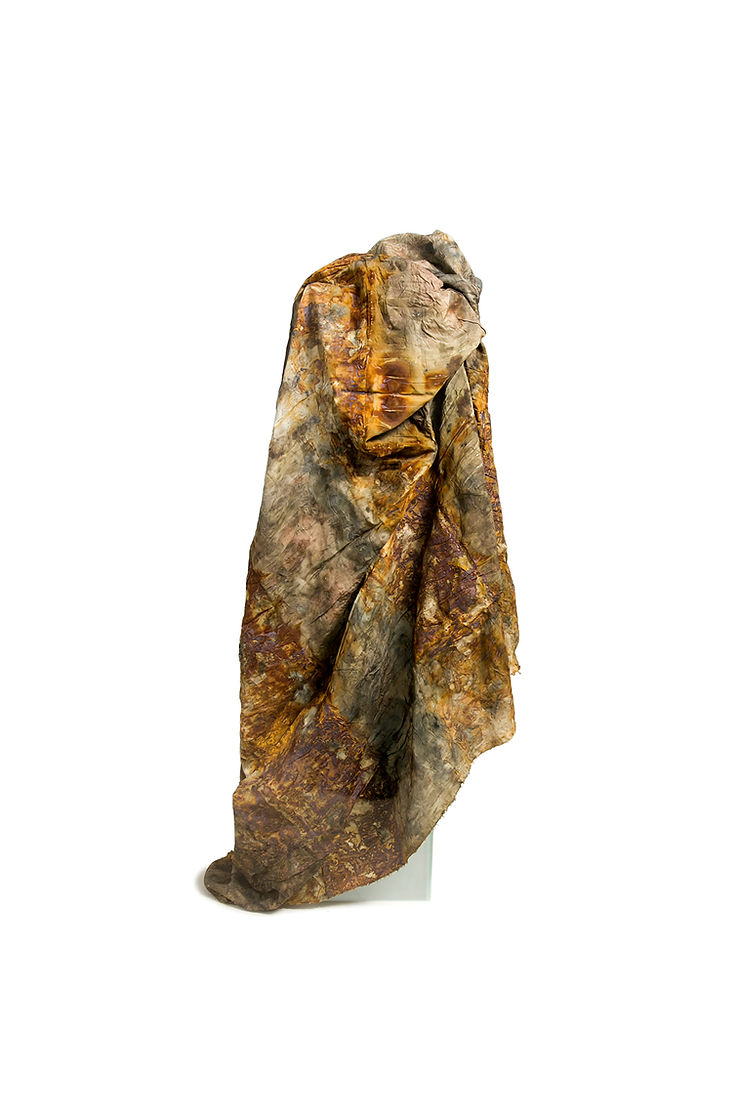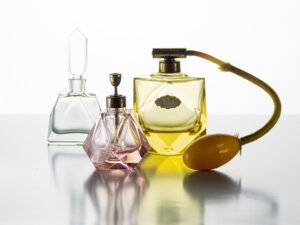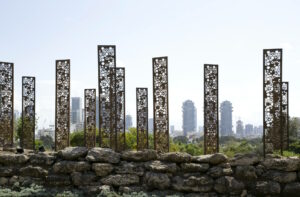
What
Fabric, rust, flowers
Who
Rama Amir, b. 1967
Why
“I experimented with botanical dyeing by means of thermo-solar energy. I wanted the process to emit less carbon dioxide than heating on a gas or electric stovetop. I used solar energy, without knowing exactly how many days the cloth would have to remain in the container. I chose 350 as a symbolic time period – since a concentration of 350 carbon dioxide particles in one million atmosphere particles is the goal set by the IPCC for carbon emissions (the current level is 415).
I created a composition on a natural cloth, using petals that I collected and rusted parts of industrial machinery. I then folded it and placed it in a closed glass container on the roof. The result is a cloth that called out to me, scorched, and partially burnt, almost disintegrating. The flowers perished, leaving no traces.
Six years ago, I began studying the process of botanical dyeing. Initially, I was enchanted by the process and the unpredictable results. Over time, this interest became related to the overarching trends of ecological and sustainable fashion, natural dyes, and the avoidance of chemical dyes. Natural dyeing also represents the return to manual crafts and the preservation of ancient traditions. This is how our ancestors dyed cloth 4,000 years ago, and this process is still used today in Africa and India. The use of materials found in my immediate environment supports the return to local sources, while the native plants – which attest to trips and events in my life – are imprinted as souvenirs on a natural cloth.
Where
On display at the Glass Pavilion, Tel Aviv Biennale of Crafts & Design, MUZA – Eretz Israel Museum, Tel Aviv.
More Articles

An Interview with Raed Bawayah Taken from the "Black Life. White Art" exhibition catalogue published recently. Interviewer: Guy Raz
30.04.24

New Acquisitions: Gifts from the Tennenbaum Collection to the Glass Pavillion Over 70 glass items from the Rivka and Zvi Tennenbaum Collection have been donated to the Glass Pavilion
18.04.24

New Acquisitions: Works Exhibited at the Biennale of Crafts & Design Some 60 artists whose works were exhibited at the Biennale of Crafts & Design held at the museum in 2020 and 2023 generously contributed their works to the collection of MUZA, Eretz Israel Museum, Tel Aviv
18.04.24
